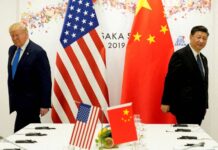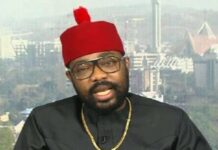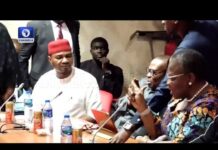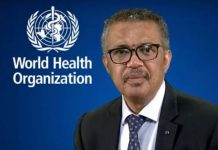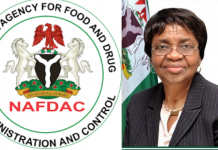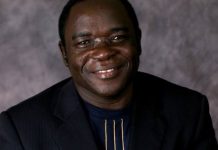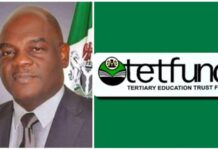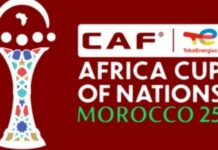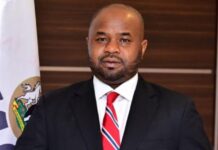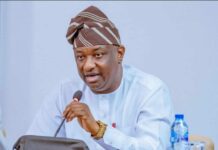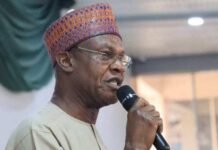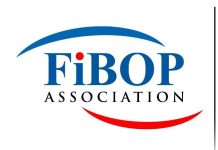The presidency has published a 41-page document detailing the achievements of the President Muhammadu Buhari’s administration since it assumed office on May 29, 2015.
The senior special assistant to the president on media and publicity, Mr. Garba Shehu released the document today in Abuja, three days after President Buhari addressed Nigerians the Democracy Day.
He said the 41-page document highlights the administration’s successes in the economy, security and the fight against corruption, “which are the three priorities of the government’s change agenda.”
“The document is organised into the following sections: Resetting the Economy; Restoring Growth, Growing What We Eat; Making Business Work; Doing More With Less; Investing In People; New Vision for the Niger Delta; Plugging Leakages; and Justice Reforms.
“The fact sheet, which will be updated regularly, showcases improving economic indices, rising investment in agriculture and infrastructure, successes in the fight against terrorism, and ongoing efforts to improve security in the North Central.
“In addition, it lists the several measures taken to promote transparency and accountability in government finances,” the statement read in part.
According to the highlights of the statement, Nigeria’s economy is back on the path of growth under Buhari, after the recession of 2016-17 (1.95 percent growth in Q1 2018).
It added that the present administration’s priority sectors — agriculture and solid minerals — maintained consistent growth throughout the recession.
It also noted that inflation has fallen for the 15th consecutive month, from 18.7 percent in January 2017 to 12.5 percent as of April 2018.
External reserves of $47.5bn, the statement said, are the highest in five years and double the size as of October 2016.
It added, “Total exports in 2017 were 59.47% higher than for 2016
“The first quarter of 2018 saw the fourth consecutive quarterly increase in capital importation since Q2 2017. The total value of capital imported in the quarter stood at $6.3bn, which is a year-on-year increase of 594.03%, and a 17.11% growth over the figure reported in the previous quarter.
“The new FX Window introduced by the CBN in April 2017, now sees an average of $1bn in weekly turnover, and has attracted about $25bn in inflows in its first year (and a total turnover of $47.14bn) – signalling rising investor confidence in Nigeria.
“Nigeria’s Stock Market ended 2017 as one of the best-performing in the world, with returns in excess of 40 percent.
“Five million new taxpayers added to the Tax Base since 2016, as part of efforts to diversify Government revenues.
“Tax Revenue increased to N1.17trn in Q1 2018, a 51% increase on the Q1 2017 figure.
“N2.7trn spent on Infrastructure in 2016 and 2017 fiscal years, an unprecedented allocation in Nigeria’s recent history.
“Fourteen moribund Blending Plants revitalised so far under the Presidential Fertilizer Initiative; with a total capacity of 2.3 million MT of NPK fertilizer.”
According to the highlights the Federal Government inaugurated the Presidential Infrastructure Development Fund in May 2018 under the management of the Nigerian Sovereign Investment Authority.
The PIDF, it added, is kicking off with seed funding of $1.3bn.
It noted that the Nigeria Sovereign Investment Authority in March 2018 invested $10m to establish a world-class Cancer Treatment Centre at the Lagos University Teaching Hospital and $5m each in the Aminu Kano University Teaching Hospital and the Federal Medical Centre, Umuahia, to establish modern Diagnostic Centres.
It disclosed that the centres should be completed before the end of 2018.
It said the present administration issued a N100 billion Sukuk Bond in 2017, describing it as Nigeria’s first sovereign Sukuk Bond.
“Proceeds from that Bond are funding 25 major road projects across the six geopolitical zones of Nigeria,” it added.
The statement indicated that the complete document had been uploaded to the State House website.
Some of the highlights are:
ECONOMY
Economic growth is back, and consolidating:
The Economy is back on the path of growth, after the recession of 2016-17 (1.95 percent growth in Q1 2018)
The Buhari Administration’s priority Sectors of Agriculture and Solid Minerals maintained consistent growth throughout the recession.
Inflation has fallen for the fifteenth (15th) consecutive month, from 18.7 percent in January 2017 to 12.5 percent as of April 2018.
External Reserves of US$47.5 billion are the highest in 5 years, and double the size as of October 2016.
Total exports in 2017 were 59.47% higher than for 2016
In 2017, agriculture exports grew 180.7% above the value in 2016
In 2017, raw material exports grew 154.2% above the value in 2016
In 2017, solid minerals exports grew 565% above the value in 2016
In 2017, exports of manufactured goods grew 26.8% above the value in 2016
The first quarter of 2018 saw the fourth consecutive quarterly increase in capital importation since Q2 2017. The total value of capital imported in the quarter stood at US$6.3 billion, which is a year-on-year increase of 594.03%, and a 17.11% growth over the figure reported in the previous quarter.
The new FX Window introduced by the CBN in April 2017 now sees an average of US$1 billion in weekly turnover, and has attracted about US$25 billion in inflows in its first year (and a total turnover of $47.14 billion) – signaling rising investor confidence in Nigeria.
Nigeria’s Stock Market ended 2017 as one of the best- performing in the world, with returns in excess of 40 percent.
Five (5) million new taxpayers added to the Tax Base since 2016, as part of efforts to diversify Government revenues.
Tax Revenue increased to N1.17 Trillion in Q1 2018, a 51% increase on the Q1 2017 figure.
N2.7 Trillion spent on Infrastructure in 2016 and 2017 fiscal years, an unprecedented allocation in Nigeria’s recent history.
Fourteen (14) moribund Blending Plants revitalized so far under the Presidential Fertilizer Initiative (PFI); with a total capacity of 2.3 million MT of NPK fertilizer
The contribution of Solid Minerals’ to the Federation Account rose five-fold from N700 million in 2015 to N3.5 billion in 2017.
GROWING WHAT WE EAT
The Anchor Borrowers Programme (ABP) of the Central Bank of Nigeria (details below) has made available N82 billion in funding to 350,000 farmers of Rice, Wheat, Maize, Cotton, Cassava, Poultry, Soy Beans and Groundnut; who have cultivated about 400,000 hectares of land.
The ABP has substantially raised local production of rice; yields have doubled from 2-3 tonnes per hectare in areas; Nigeria’s paddy production has doubled compared to 2014 levels.
Between 2016 and 2018, eight new rice mills have come on- stream in Nigeria.
More than a billion dollars of private sector investments in the production of Rice, Wheat, Sugar, Poultry, Animal Feed, Fertilizers, etc, since 2015.
Nigeria’s milled rice production has increased by about 60 percent, from 2.5 million MT in 2015, to 4 million MT in 2017.
The Presidential Fertilizer Initiative (which involves a partnership with the Government of Morocco, for the supply of phosphate), has resulted in the revitalization of 14 blending plants across the country, with a total installed capacity in excess of 2 million MT. The benefits include annual savings of US$200 million in foreign exchange, and
₦60 billion annually in budgetary provisions for Fertilizer subsidies. The Scheme has also made it possible for Farmers to purchase Fertilizer at prices up to 30 percent cheaper than previously available.
DOING MORE WITH LESS
N1.219 Trillion was released for capital expenditure in the
2016 budget, and N1.476 trillion so far in the 2017 budget, making a total of N2.7 Trillion (about US$9 billion) in two years. This investment has enabled the resumption of work on several stalled projects — road, rail and power projects — across the country.
Savings:
Even at a time of low oil prices (and by implication low government revenues): Nigeria’s External Reserves have doubled since October 2016, from US$24 billion to US$48 billion.
The Nigerian Sovereign Investment Authority (NSIA) has seen inflows of US$1.15 billion under the Buhari Administration (the first government inflows since the original US$1 billion which the Fund kicked off within 2012).
Infrastructure: The Buhari Administration has demonstrated a single- minded commitment to upgrading and developing Nigeria’s Transport, Power and Health Infrastructure.
In May 2018, the Federal Government launched the Presidential Infrastructure Development Fund (PIDF), under the management of the Nigerian Sovereign Investment Authority. The PIDF is kicking off with seed funding of US$1.3 billion.
Nigeria Sovereign Investment Authority (NSIA) in March 2018 invested US$10m to establish a world-class Cancer Treatment Center at the Lagos University Teaching Hospital (LUTH), and US$5m each in the Aminu Kano University Teaching Hospital and the Federal Medical Centre, Umuahia, to establish modern Diagnostic Centres. These Centers should be completed before the end of 2018.
In 2014, the Federal Government spent these sums on the following sectors: Transport (N14 billion), Agriculture & Water (N34 billion), Power, Works & Housing (N106 billion). In 2017 those figures jumped to: Transport (N127 billion), Agriculture & Water (N130 billion), Power, Works & Housing (N325 billion).
Road Projects are ongoing across every State of the country; many of these projects had been abandoned in recent years because of mounting debts owed by the Federal Government to contractors.
The Buhari Administration issued a N100 billion Sukuk Bond in 2017, Nigeria’s first sovereign Sukuk Bond. Proceeds
From that Bond are funding 25 major road projects across the six geopolitical zones of Nigeria.
Upgrade of Nigeria’s 3,500km network narrow-gauge railway network has commenced, with the signing, in April 2018, of the interim phase of a concession agreement between the Government of Nigeria and an International Consortium led by General Electric (GE). The target of this Interim Phase is that within the next 12 months, passengers will experience reduced travel time by rail between Lagos to Kano, and, for the first time in over a decade, contracted and scheduled freight rail services will be available.
Abuja’s Light Rail system has been completed and will go into operation in 2018. The first line to be launched will connect the city center with the Airport, with a link to the Abuja-Kaduna Railway Line.
The Buhari Administration successfully completed the reconstruction of the Abuja Airport runway within the scheduled six-week period (March – April 2017).
The following Water Supply Projects and Dam/Irrigation
Projects have been completed by the Buhari Administration:
*Central Ogbia Regional Water Project, in Bayelsa
* Sabke/Dutsi/Mashi Water Supply Project, in Katsina
* Northern Ishan Regional Water Supply Project, serving
*Ugboha and Uromi communities of Edo State.
*Kashimbila Dam, Taraba State
*Ogwashi-Uku Dam, Delta State
*Shagari Dam Irrigation Project, Sokoto State
*Rehabilitation of Ojirami Dam Water Supply Project, Edo State
More than 70 Ecological Fund projects awarded and completed by the Buhari Administration, across the six geopolitical zones of Nigeria (Flood Control, Erosion Control, Bridges and Dams, Channelization and Desilting, etc)
In 2017 Nigeria retained her Federal Aviation Administration (FAA) Category 1 status, after a routine international audit.
In January 2018, a new Maintenance Repair and Overhaul facility with the capacity for aircraft C-checks and other comprehensive levels of maintenance was established in Lagos. This facility will save Nigeria an estimated $90m annually.
The 25 Road Projects being funded by the N100 Billion Sukuk Bond:
*Construction of Oju/Loko–Oweto bridge over River Benue to link Loko (Nasarawa state) and Oweto (Benue state) along route F2384
*Dualisation of Abuja–Abaji–Lokoja Road section I (International Airport link road junction–Sheda Village)
*Dualisation of Suleja–Minna Road in Niger State Phase II (km 40+000-km101+000)
*Dualisation of Abuja–Abaji–Lokoja Road: Section IV Koton Karfe–Lokoja in Kogi State
*Dualisation of Lokoja-Benin Road: Obajana–Okene in Kogi State
*Dualisation of Kano–Maiduguri Road linking Kano– Jigawa–Bauchi–Yobe
*Dualisation of Kano–Maiduguri Road linking Kano– Jigawa–Bauchi–Yobe–Borno States. Section III (Azare– Potiskum) in Bauchi
*Dualisation of Kano–Maiduguri Road linking Kano– Jigawa–Bauchi–Yobe–Borno States. Section IV (Potiskum–Damaturu road) in Yobe
*Dualisation of Kano–Maiduguri Road linking Kano– Jigawa–Bauchi–Yobe–Borno States. Section V (Damaturu–Maiduguri)
*Dualisation of Kano–Maiduguri Road linking Kano– Jigawa–Bauchi–Yobe–Borno States. Section I (Kano– Wudil–Shuari) in Kano
*Dualisation of Kano–Katsina Road Phase I, Kano Town at Dawanau roundabout to Katsina border in Kano
*Construction of Kano Western Bypass as an extension of dualisation of Kano–Maiduguri Road Section I
*Construction of Kaduna Eastern Bypass
*Rehabilitation of outstanding section of Onitsha–Enugu Expressway: Amansea–Enugu border
*Rehabilitation of Enugu–Port Harcourt dual-carriage Section I: Lokpanta–Umuahia in Abia
*Rehabilitation of Enugu–Port Harcourt dual-carriage Section II Umuahia tower–Aba Township Rail
*Rehabilitation of Enugu–Port Harcourt Road Section III: Enugu–Lokpanta
*Rehabilitation of Enugu–Port Harcourt Road Section IV: Aba–Port Harcourt in Rivers
*Dualisation of Yenegwe Road Junction–Kolo–Otuoke– Bayelsa Palm in Bayelsa
*Dualisation of Lokoja–Benin Road: Obajana Junction– Benin Section II Phase I: Okene–Auchi, Kogi/Edo states
*Dualisation of Lokoja–Benin Road: Obajana Junction– Benin Section III Phase I: Auchi–Ehor in Edo
*Dualisation of Lokoja-Benin Road: Obajana junction– Benin Section IV Phase I: Ehor–Benin City, Edo state
*Reconstruction and asphalt overlay of Benin–Ofosu– Ore–Ajebandele–Shagamu dual-carriage Phase IV
*Reconstruction of outstanding section of sections of Benin–Ofusu–Ore–Ajebandele–Shagamu dual-carriage Phase III
*Dualisation of Ibadan–Ilorin Road. Section II: Oyo– Ogbomosho Road in Oyo
Power Sector:
More than 2,000MW of additional power generation capacity by the end of 2018 – some of it via publicly owned plants (Afam Fast Power, 240MW); others through private sector investment supported by the Federal Government.
Launch of the Energizing Economic Programme which is bringing reliable and efficient power to economic clusters / markets around the country. Pilot projects currently being implemented in Aba (Ariaria Market), Lagos (Shomolu Printing Community, (Sura Shopping Complex), Kano (Sabon Gari Market) and Akure (Isinkan Market).
Launch of the N701 billion Payment Assurance Programme designed to resolve the liquidity challenges in the Power Sector by guaranteeing payments to Generating Companies and Gas Suppliers
Transmission Expansion and Rehabilitation Programme has resulted in a 50 percent expansion in Grid Capacity since 2015, from 5,000MW to 7,125MW as at December 2017.
Distribution Expansion Programme (DEP) was approved by the Federal Executive Council in February 2018 to increase distribution capacity in collaboration with the DisCos. Implementation of the DEP has commenced, with the issuance, in May 2018, of a call for tenders for the procurement of distribution substations and electrical equipment.
‘Beyond the Grid’ Programme, a Public-Private Partnership scheme championed by the Presidency and the Niger Delta Power Holding Company (NDPHC), successfully deployed 20,000 units of ‘solar home systems’ to power rural households across 12 States, between July 2017 and April 2018.
Home Grown School Feeding Programme (HGSFP):
Currently a total of 8.2 million pupils in 45,394 public primary schools across 24 states: Abia, Anambra, Enugu, Ebonyi and Imo (South East); Akwa Ibom, Cross River and Delta (South South); Osun, Oyo, Ondo and Ogun (South West); Benue, Niger and Plateau (North Central); Kaduna, Katsina, Kano, and Zamfara (North West); Bauchi, Taraba, Borno, Gombe and Jigawa (North East).
Over 80,000 direct jobs have since been created from the School Feeding Programme; with 87,261 cooks currently engaged in the 24 participating states. All 36 states of the Federation and the FCT will eventually benefit from the Programme.
The Health aspect of the programme has seen over 3 million pupils dewormed in 6 states, the deworming programme is a bi-annual programme aimed at eradicating and reducing the burden of worms.
Conditional Cash Transfer (CCT): 297,973 families benefiting from the CCT Scheme, which pays N5,000 monthly to the poorest and most vulnerable households in the country.
With Punch and Channels TV reports

